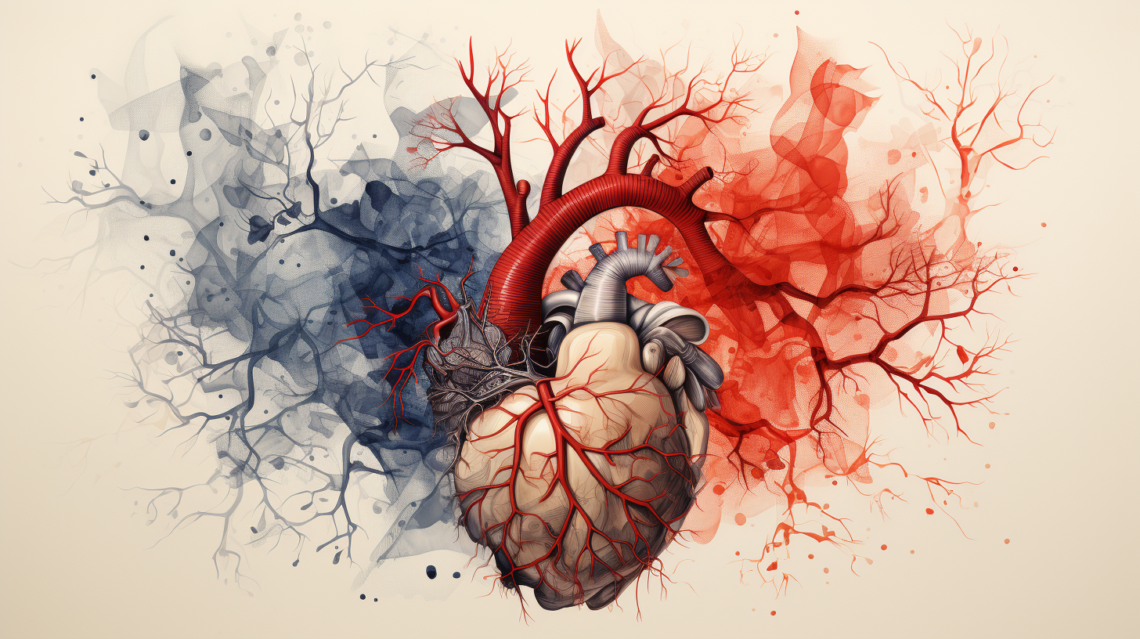
Pulmonary Hypertension
Pulmonary hypertension (PH) is a rare but serious medical condition that affects the arteries in the lungs and the right side of the heart. In Canada, as in many parts of the world, this condition can have a significant impact on a person’s quality of life and overall health. This article aims to shed light on what pulmonary hypertension is, its causes, symptoms, and who is at risk in the Canadian population.
Understanding Pulmonary Hypertension
Pulmonary hypertension is a condition characterized by high blood pressure in the pulmonary arteries. These arteries are responsible for carrying blood from the heart to the lungs, where oxygen is obtained and carbon dioxide is expelled. In individuals with PH, the pulmonary arteries become narrowed or blocked, making it harder for the heart to pump blood through them. This increased workload on the right side of the heart can lead to heart failure over time.
Causes of Pulmonary Hypertension
Pulmonary hypertension can be classified into five main categories based on its causes:
- Group 1: Pulmonary arterial hypertension (PAH) – This is the most common form of PH and is often idiopathic, meaning the exact cause is unknown. It can also be associated with other medical conditions such as connective tissue diseases, HIV, and certain medications.
- Group 2: PH due to left heart disease – Conditions like congestive heart failure, valvular heart disease, and cardiomyopathies can lead to PH in this group.
- Group 3: PH due to lung diseases and/or hypoxia – Chronic obstructive pulmonary disease (COPD), interstitial lung disease, and sleep apnea are examples of lung disorders that can cause PH.
- Group 4: Chronic thromboembolic pulmonary hypertension (CTEPH) – This type of PH is a result of blood clots in the pulmonary arteries, leading to increased pressure.
- Group 5: PH with unclear or multifactorial mechanisms – This category includes PH associated with a variety of conditions like blood disorders, metabolic disorders, and kidney diseases.
Who’s at Risk?
Pulmonary hypertension can affect individuals of all ages, races, and backgrounds. However, certain factors may increase the risk of developing PH:
- Genetics: There is evidence to suggest that some forms of PH may have a genetic component, making individuals with a family history of the condition more susceptible.
- Age: While PH can occur at any age, it is more common in adults, particularly those over 60.
- Gender: Some forms of PH are more prevalent in females, such as idiopathic pulmonary arterial hypertension (IPAH).
- Existing Health Conditions: Those with pre-existing medical conditions like connective tissue diseases, congenital heart defects, HIV, and liver disease are at a higher risk of developing PH.
- Lifestyle Factors: Smoking and obesity can increase the risk of developing PH, particularly in those already predisposed due to other factors.
- Altitude: Living at high altitudes may contribute to the development of PH due to lower oxygen levels in the air.
- Medications: Certain drugs and medications, such as certain diet pills and amphetamines, can increase the risk of developing PH.
Symptoms and Diagnosis
The symptoms of pulmonary hypertension can be subtle and often go unnoticed in the early stages. Common symptoms include:
- Shortness of breath, especially during physical activity
- Fatigue
- Chest pain or pressure
- Dizziness or fainting spells
- Swelling in the ankles, legs, or abdomen (edema)
- Bluish lips or skin (cyanosis)
Diagnosing PH typically involves a combination of medical history, physical examinations, and specialized tests, such as echocardiography, right heart catheterization, and lung function tests. Early diagnosis is crucial to prevent further damage to the heart and lungs.
Treatment Options
The treatment of pulmonary hypertension in Canada typically involves a multidisciplinary approach, including specialists in cardiology, pulmonology, and rheumatology, depending on the underlying cause. Treatment options may include:
- Medications: Various drugs are available to manage PH, including vasodilators, anticoagulants, and diuretics, depending on the specific type and severity of PH.
- Oxygen Therapy: Supplemental oxygen can help alleviate symptoms and improve oxygen levels in the blood.
- Lifestyle Changes: Patients are often advised to make lifestyle changes such as quitting smoking, maintaining a healthy weight, and staying physically active as tolerated.
- Surgery: In cases of chronic thromboembolic pulmonary hypertension (CTEPH), surgical interventions such as pulmonary endarterectomy or balloon pulmonary angioplasty may be recommended.
- Lung Transplantation: In severe cases where other treatments are ineffective, lung transplantation may be considered.
Pulmonary hypertension is a complex and potentially life-threatening condition that can affect individuals in Canada and around the world. Recognizing the risk factors, symptoms, and available treatments is essential for early diagnosis and effective management. If you or a loved one experience symptoms of PH, it’s crucial to seek medical attention promptly to ensure the best possible outcome and quality of life. Regular check-ups and open communication with healthcare providers are essential in managing this challenging condition in the Canadian context.
Learn more about pulmonary hypertension by visiting phacanada.ca.

